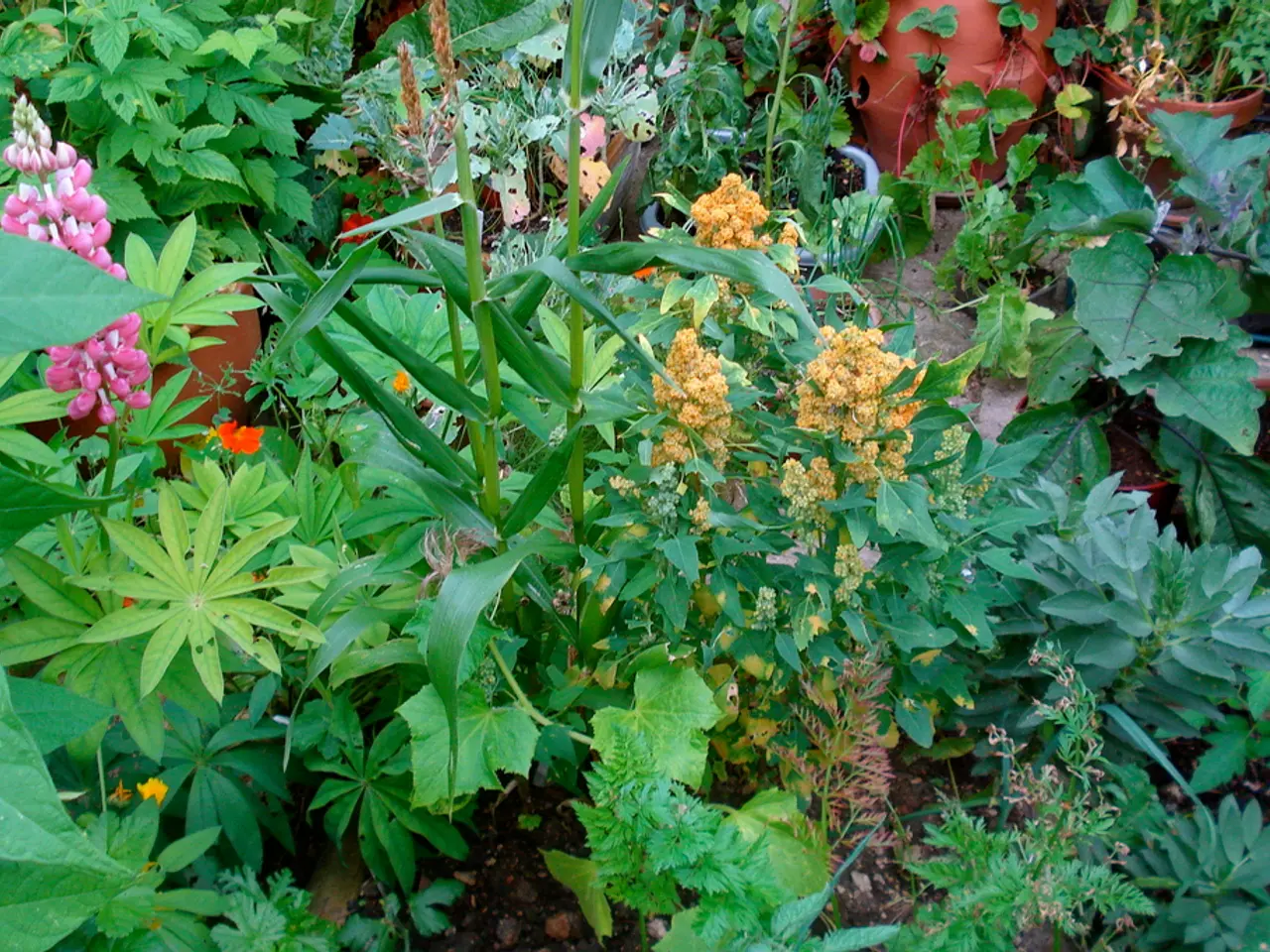Creating a Wigwam Support for Vertical Gardening: A Compact DIY Solution for Cultivating Veggies and Climbers in Limited Spaces
In the quest for a space-saving, budget-friendly, and visually appealing vertical gardening solution, look no further than the traditional wigwam plant support. This simple yet effective structure, made from natural materials like bamboo or sturdy sticks, is ideal for climbing plants such as peas, beans, cucumbers, and sweet peas.
### Step-by-Step Guide to Building a Wigwam Plant Support
1. Gather Materials: - 3 to 6 long bamboo poles or sturdy sticks (about 6 to 8 feet tall for most garden plants). - Garden twine, string, or strong wire. - Optional: Garden scissors or knife for trimming.
2. Prepare the Poles: - Choose poles that are strong enough to support the weight of the plants. - Trim the bottoms if necessary to remove rough edges that will be pushed into the soil.
3. Arrange the Poles into a Wigwam Shape: - Stand the bamboo poles upright. - Bring the tops together to form a cone or teepee shape. - Spread the bottoms evenly in the soil to create a stable base. - Bury the ends of the poles about 12–18 inches deep to ensure sturdiness against wind and the weight of plants.
4. Secure the Top: - Tie the poles tightly together at the top using garden twine or wire to hold the structure firmly. - You can also tie horizontal supports (additional sticks or twine) at intervals down the poles for extra stability and more places for plants to latch onto.
5. Place in Garden: - Insert the wigwam support into the soil near the base of the plant you want to train vertically. - Position it well so plants can easily climb the structure.
6. Guide Plants to Climb: - As plants grow, gently tie their stems to the wigwam if needed. - The open sides allow plants to climb naturally and receive good air circulation.
### Benefits and Tips
- Bamboo, a classic, inexpensive, and natural material, is highly recommended for these supports. - Wigwam supports are space-saving, allowing vertical growth and increasing harvest yields in small gardens. - This structure works well for many climbers like sweet peas, beans, cucumbers, and tomatoes. - For heavier plants, ensure the poles are thick and firmly planted to withstand the weight. - Add horizontal supports to aid plant growth by feeding twine in and around each stake and working your way upwards in a spiral. - Tomatoes require a shorter wigwam, with a structure roughly 3-4ft high. - Bamboo stakes are recommended for constructing a wigwam structure. - Adding a wigwam, obelisk, or arch to a landscape improves plants' access to sunlight and air flow. - Stakes should be pushed at least 15cm into the ground to ensure the wigwam is securely anchored.
With this DIY wigwam plant support, you can create a beautiful and functional vertical garden that maximises your growing space with minimal expense and effort. Happy gardening!
Incorporating a wigwam plant support into your home-and-garden setup can enrich your lifestyle by providing a visually appealing and space-saving solution for growing climbing plants such as sweet peas, beans, cucumbers, and tomatoes in your garden. Constructing a wigwam from bamboo, a natural and affordable material, is a simple yet effective way to add vertical gardening to your landscape.




